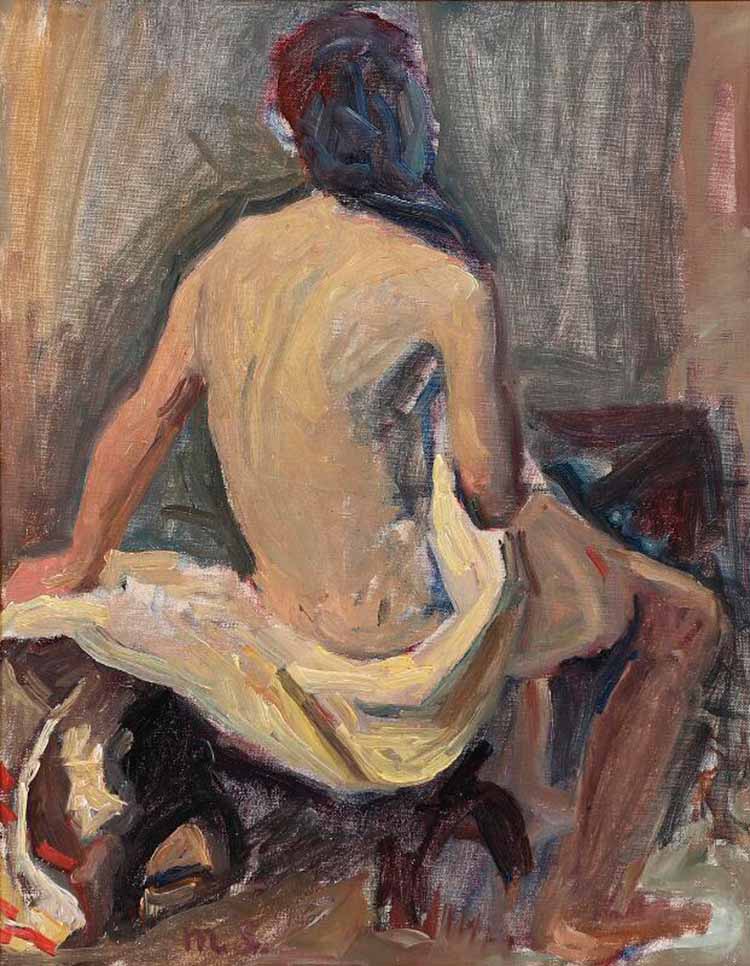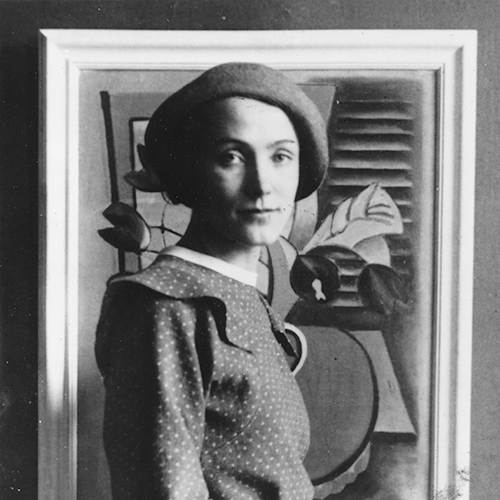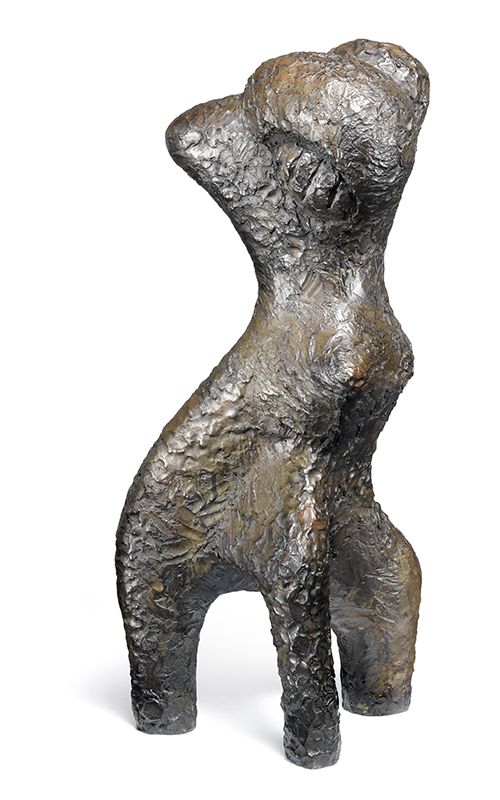Pioneering Women Artists
We’re unfurling the banners of female artists at a Live Auction and Online Auction entitled “Pioneering Women Artists” where we will be spotlighting a multitude of works by female pioneers in Danish art from 1850–1950.

|
|
In cooperation with Bonhams’ global network of auction houses, we will present the first Live Auction of the year at Nørgaardsvej 3, Lyngby, on Monday 4 March at 7 pm. The wide-ranging selection will encompass several artistic disciplines – painting, decorative art and design. Despite significant individual differences in their art forms, time periods and personalities, what all these women have in common is the fact that they had to fight for the right to a professional career. The Live Auction will be followed up by an Online Auction on 11–12 March at bruun-rasmussen.dk. |


Attend Preview and Talks!
All the works by these women artists and designers will be on display at our preview from 29 February to 3 March. At 4 pm on the opening day, Thursday 29 February, you can attend the talk, “Pioneering Women Artists, 1850–1950 – and where are we today?”. At this event, Emilie Boe Bierlich, PhD in Art History, will use the auction's works as her point of departure to describe the challenges women artists have had to overcome over time. Emilie Boe Bierlich is one of Denmark’s leading art historians, specialising in women, gender and identity. She recently curated an exhibition about sculptor Anne Marie Carl-Nielsen at Glyptoteket and she is the woman behind the upcoming AI-centred exhibition at the National Gallery of Denmark titled “Against All Odds – Historical Women and New Algorithms”.
On 12 noon on Saturday 2 March, you will have the opportunity to meet our own art specialists – Sofie Normann Christensen, Kathrine Eriksen and Amalie Hansen – at the talk “Highlights under the Hammer – Women Artists and Ceramists”.

|
Upsurge of International Interest in Women Artists
Interest in the female pioneers of the art world has never been greater, which is reflected in the increasing demand on the auction market and the many record-breaking hammer prices. Like museums and research institutions around the world, our theme of “Pioneering Women Artists” spotlights a number of artists and designers who have undeservedly stood in the shadow of their male colleagues, artists who were excluded from exhibiting solely because of their gender or who have simply disappeared into historical oblivion.
This new focus on women has brought overlooked aspects of the history to light and is broadening our horizons to such an extent that both private collectors and museums at home and abroad are looking to enlarge their collections as art and design history is rewritten.
|
|
|
|
Asserting Women’s Rights in the World of Art
It’s no secret that, throughout time, being female and being an artist have been seen as a contradiction, and that traditional gender roles have stood in the way of the artistic careers of women.
|
|
|
In the 19th century, it was rare for a woman to be an artist, and they were not admitted into the Royal Danish Academy of Fine Arts on an equal footing with their male colleagues until 1908. If we look ahead to the first half of the 20th century, the challenge was no longer to be admitted to the art academy, but to be allowed to exhibit. When it comes to Danish design history, there were also very few women in the early 1900s who found a place in the sun. It was far more common and acceptable for women to take up ceramics and textile art. Despite this gender bias, there have always been female artists and designers who defied the norms of the time. Many of these women were active in the fight for equality in the Danish art environment, and they have served as role models for their fellow sisters in later generations. At Bruun Rasmussen, we look forward to presenting this unique selection of art, decorative art and design by these pioneering women! |
|
|
|
|

Pioneering Women Artists
|
Bertha Wegmann - Champion of Female Artists Bertha Wegmann (1846-1926) was born in Switzerland but grew up in Denmark. She trained as an artist in Munich from 1867–81 and then in Paris, where she was influenced by French Naturalism and Impressionism. She subsequently settled in Denmark, where she had previously made her début at Charlottenborg’s Spring Exhibition in 1873. |

|
|
Sonja Ferlov Mancoba - The woman, the art and the community Sonja Ferlov Mancoba’s (1911–1984) sculptures grew out of a deep interest in non-Western cultures – in particular African art, which she became acquainted with through the Danish collector Carl Kjersmeier back in the 1920s. |

|
|
Rita Kernn-Larsen – An International One of a Kind Rita Kernn-Larsen’s (1904–98) artistic career began with Surrealism in partnership with the artists’ association “Linien” in Copenhagen, but despite being feted as “a female Danish Picasso” by the press at her exhibition début in 1934, she never gained wide recognition in Denmark. |

|
|
Elisabeth Jerichau Baumann – A Cosmopolitan Woman Elisabeth Jerichau Baumann was born in Poland to German parents. In 1838, she travelled to Germany to study at the Düsseldorf Art Academy. She was a cosmopolitan woman who understood from a young age that if she was to be allowed to develop her talent, she would have to seek out internationally oriented art environments. |

|
|
Anna Ancher – Light Above All Else Anna Ancher (1859–1935) was a pioneer in Danish art and is considered to be the most modern of the Skagen painters. Early in her career, she was preoccupied with strong, intense colours, and during exhibition visits in Copenhagen and trips to Paris in 1885 and 1889, she was inspired by the French avant-garde’s experiments with colour and play with light. |

|
|
Bodil Kjær – An Architectural Holistic Approach For more than seven decades, Bodil Kjær (b. 1932), professor, architect MAA has seen it as her foremost task to solve problems: From the development of modern design and flexible working environments to urban development, research, consultancy and teaching at home in Denmark and abroad. |

|
|
Agnes Slott-Møller - Legend and Symbolism Agnes Slott-Møller (1862–1937) was a key figure in Danish Symbolism. She was preoccupied with Danish history, the world of legends and folk songs, and this largely constituted her motif universe. With knights and maidens as noble role models, she sought to create art which would express patriotism, national pride and historical awareness, and which could act as a moral mirror for that time. |
|
|
|
Gerda Wegener - Between Sensation, Scandal and Sexuality Most people today know the story of Gerda Wegener as one of an extremely untraditional and unforgettable fate, and a pioneering break with the norms and gender roles of the day. Gerda Wegener was, in many ways, a woman ahead of her time and in recent years, she has been reinterpreted in light of her artistic talent, female perspective and unconventional marriage. |

|
|
Nanna Ditzel - A Free Life for Humans Nanna Ditzel (1923–2005) was one of the few women to break through at a time when the design world was very much dominated by men. While studying at the School of Arts and Crafts in the early 1940s, she also studied philosophy at the university and took classes with Professor Kaare Klint at the Royal Danish Academy of Fine Arts. |

|
|
Alev Ebüzziya Siesbye - Floating Lightness The ceramic artist Alev Siesbye (b. 1938) is known for her ethereal style. Born in Turkey, she attended the Istanbul State Academy of Fine Arts, but travelled to Denmark in the early 1960s because she was interested in the simple Nordic idiom being conveyed by the architects and artists of the time. With her knowledge of ancient design and colouring, Siesbye introduced a brand-new style not previously seen in Danish decorative art. |
|
|
For further information, please contact:
+45 8818 1111 · info@bruun-rasmussen.dk






